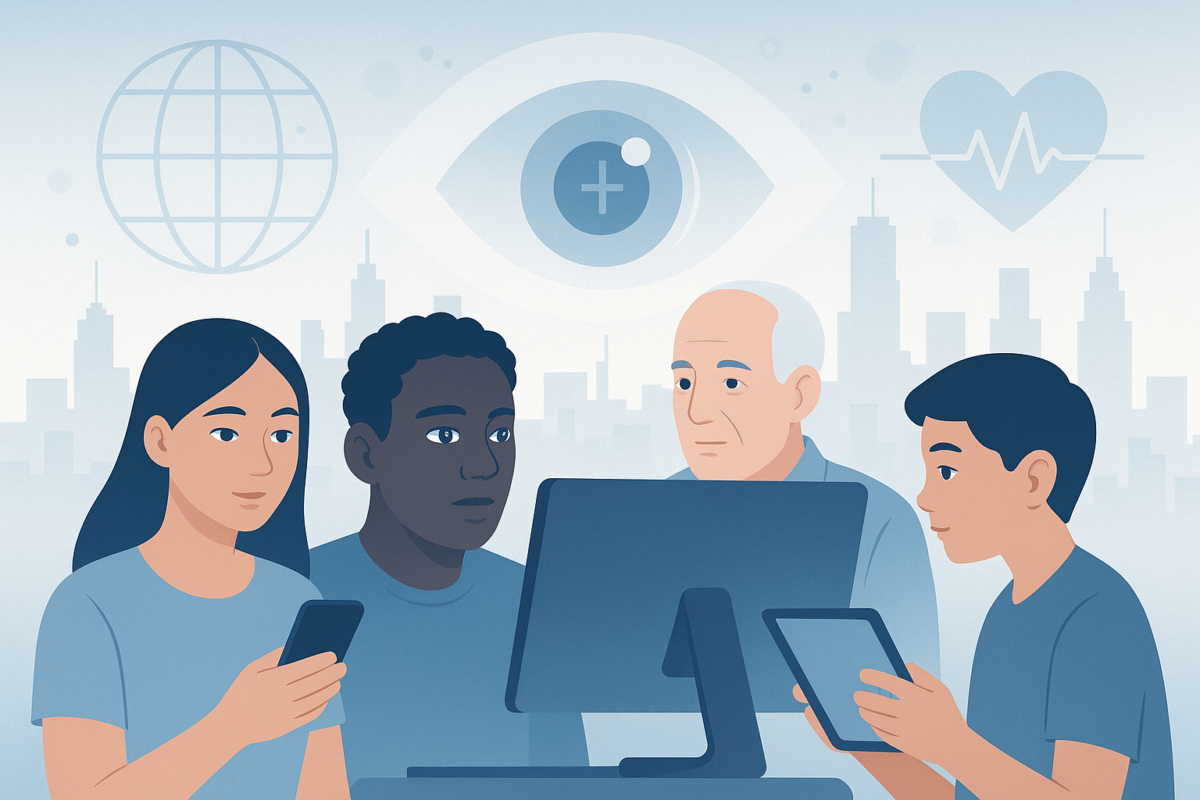Why 스마일프로 matters for global issues
nypum.org looks at long-term issues that shape our shared future: inequality, health gaps, digital access, and social justice. At first glance, 스마일프로 (an advanced laser vision correction procedure) might seem like a narrow medical topic.
But when we zoom out, eye health sits right at the intersection of:
- Equal access to education
- Fair participation in the digital economy
- Quality of life and mental well-being
- Health system equity across regions and income levels
In this context, 스마일프로 is not only about clearer vision. It is a lens through which we can examine how technology-driven healthcare can either reduce or deepen inequality.
Vision, inequality, and the digital divide
We often talk about the “digital divide” in terms of internet access and devices. However, vision is a hidden but crucial part of that story.
- Students cannot fully benefit from online classes if they struggle to see screens or read text.
- Workers in offices, factories, and service roles depend on screens and fine visual tasks every day.
- Older adults increasingly rely on digital tools for banking, healthcare access, and communication.
When vision problems remain untreated or under-treated, people face real barriers to:
- Finishing school or performing well academically
- Competing for jobs in knowledge-based industries
- Staying connected to public services and communities
Advanced procedures like 스마일프로 highlight how healthcare innovation can support — or exclude — different social groups, depending on who can actually access these solutions.
What is unique about 스마일프로?
스마일프로 represents a more refined generation of laser eye surgery, designed with modern lifestyles in mind. While detailed clinical explanations belong to medical experts, several aspects are socially meaningful:
- Minimally invasive concept: A smaller incision approach aims to reduce disruption to corneal tissue compared to some older methods.
- Comfort and recovery focus: Many patients seek options that emphasize comfort and speedy return to work, study, or daily life.
- Designed for high screen users: Office workers, students, and creators who spend most of their day in front of digital devices often pursue procedures that promise reliable visual quality.
For readers seeking a clinical, patient-oriented explanation, you can review more detailed information about 스마일프로 here:
This kind of technology shows how medical progress can support people in adapting to a world where screens and visual tasks dominate.
Eye surgery as a social justice question
From a global issues perspective, 스마일프로 opens up several important questions for nypum.org readers:
1. Who can access advanced care?
High-end procedures tend to appear first in major cities and higher-income countries. That means:
- Urban, higher-income patients often gain access early.
- Rural, low-income, or marginalized communities may wait years or never see the same options.
The availability of 스마일프로 can become a marker of inequality within and between countries.
2. How do we avoid a “two-tier” health system?
When advanced surgeries like 스마일프로 are available only to those who can pay high costs out of pocket, a two-tier pattern emerges:
- A premium track for those with resources
- A basic or delayed track for those without
For a fairer global society, we need policies and models that encourage:
- Insurance and public health systems to recognize the long-term benefits of good vision
- Partnerships that lower costs or support training in under-served regions
- Evidence-based guidelines to prioritize patients who will benefit most in terms of life chances, not only lifestyle convenience
3. Vision as infrastructure for opportunity
Clear vision is part of the human infrastructure that supports:
- Quality education
- Productive employment
- Social participation
- Mental well-being
By treating vision correction, including 스마일프로, as a public interest topic rather than a luxury service, societies can integrate eye health into their broader strategies for inclusive and sustainable development.
Digital life, mental load, and eye health
Modern life brings constant visual and cognitive load:
- Multiple screens at once
- Continuous notifications and information flow
- Long working hours in visually demanding environments
When people live with uncorrected or poorly corrected vision, they often report:
- Fatigue and headaches
- Difficulty focusing
- Increased stress and reduced concentration
Procedures like 스마일프로 can help some individuals reduce their daily strain and dependence on glasses or contact lenses. But from a global issues viewpoint, the key question is not only whether this technology exists, but who can realistically benefit from it.
nypum.org can use this topic to highlight the mental and social dimensions of health, not just the physical ones.
How nypum.org can frame 스마일프로
On a site focused on global social issues, 스마일프로 can be positioned as a case study connecting healthcare innovation with justice and sustainability. For example, an article might:
- Start with a real or hypothetical story of a young worker or student whose life changes after vision correction.
- Introduce 스마일프로 as a symbol of high-tech ophthalmology in advanced urban clinics.
- Compare access to such procedures between higher-income and lower-income groups, both domestically and globally.
- Discuss how public policy, insurance frameworks, and international cooperation can make advanced eye care more equitable.
- Link eye health to broader goals, such as reducing educational inequality and improving fair access to the digital world.
This approach allows the keyword 스마일프로 to fit naturally into nypum.org’s mission: exploring structures, systems, and policies that shape global fairness.
Conclusion: seeing justice clearly
In the big picture, 스마일프로 is more than a medical brand name. It represents:
- The promise of technology to improve daily life
- The risk that innovation widens the gap between those who can pay and those who cannot
- The responsibility of societies to treat essential health functions, like vision, as a shared priority
